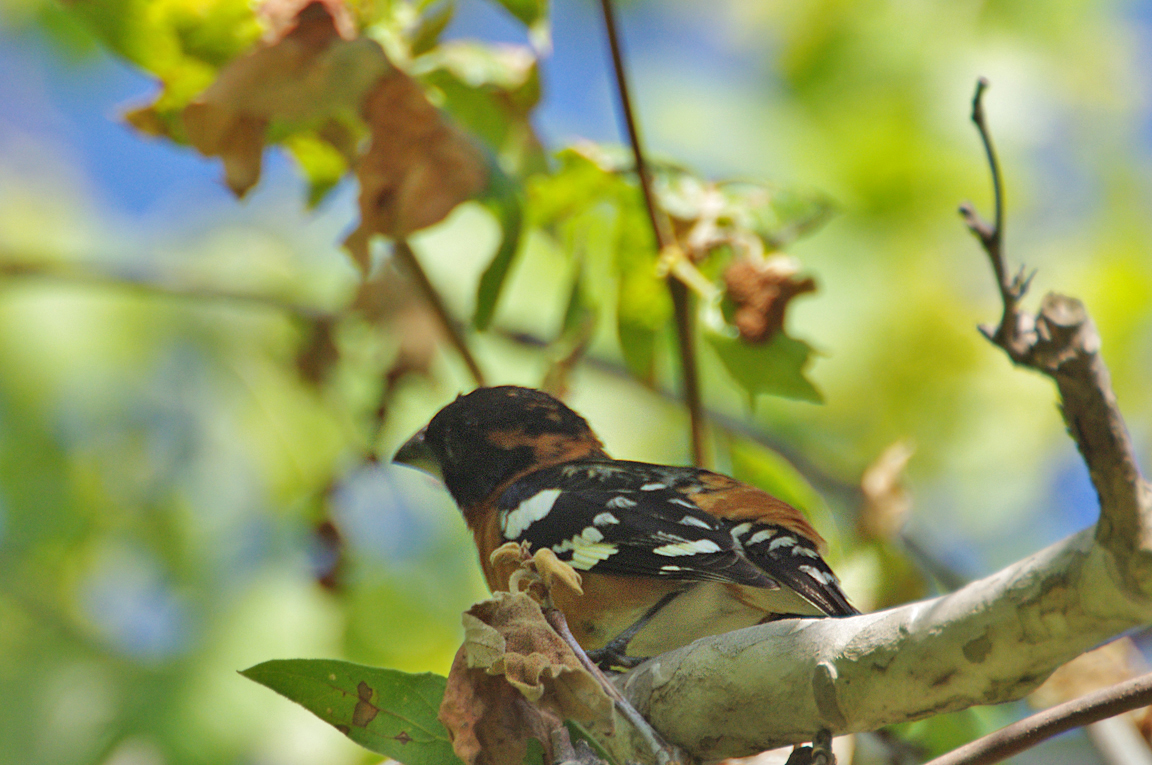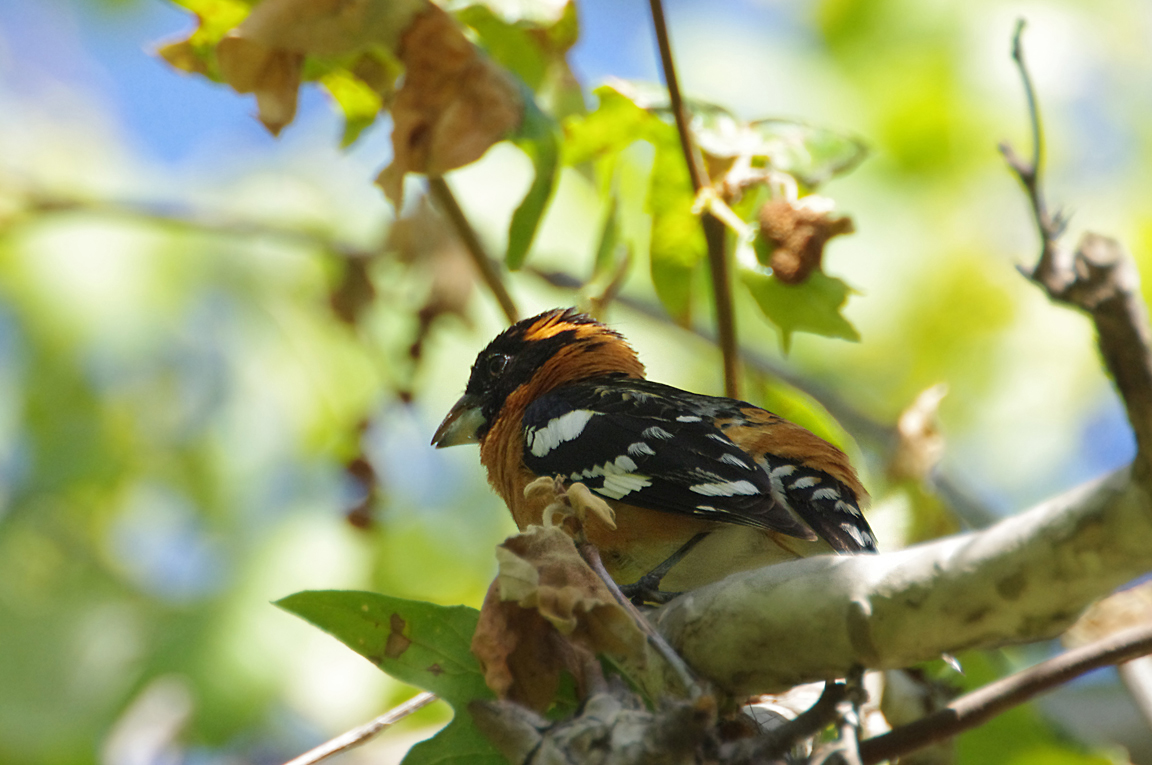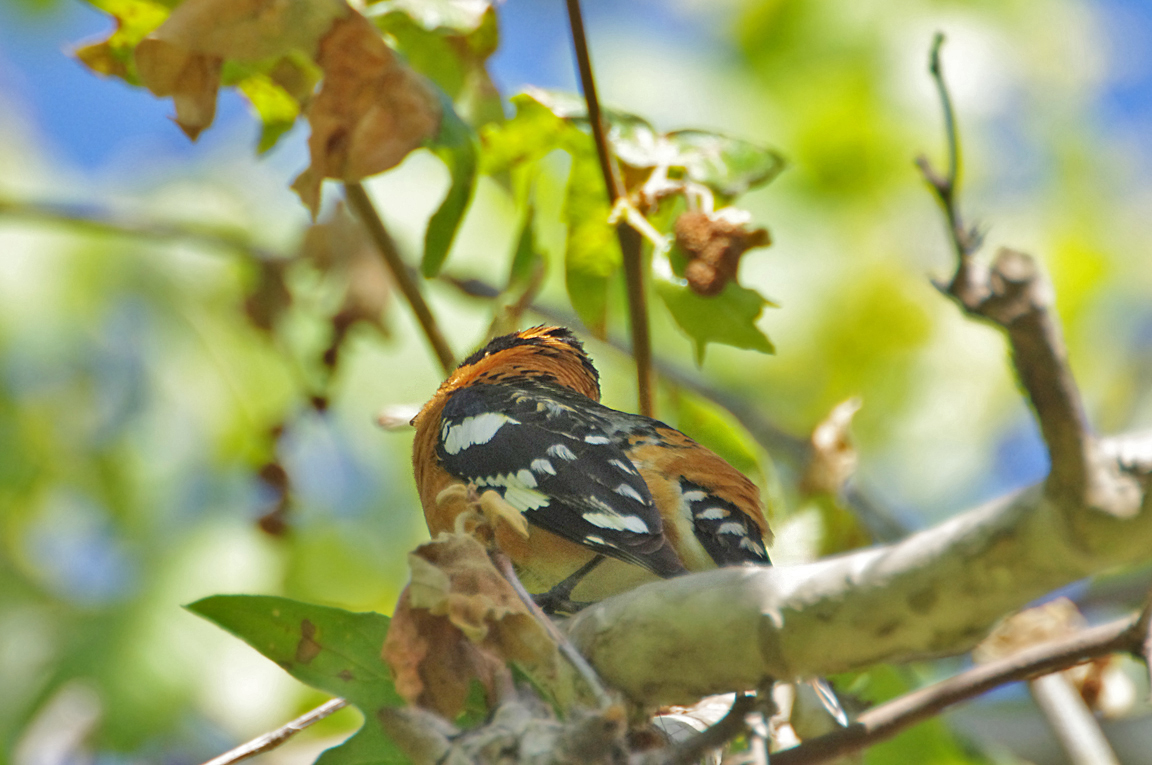|
|
|
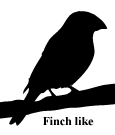 |
Black-headed Grosbeak
|
| Pheucticus melanocephalus | |
A common and familiar bird of the American West, the Black-headed Grosbeak can be found in mountain forests, along desert streams, or in backyards and gardens. The male and female differ greatly in their plumage, with the male being a flashy black, white, and cinnamon, and the female a drab buff and brown.
Interesting Information
-
Despite his showy plumage, the male Black-headed Grosbeak shares about equally with the female in incubating eggs and feeding young.
-
The nest of the Black-headed Grosbeak is widely reported to be so thinly constructed that eggs can be seen through bottom. However, nests are less thin in northern California. Thin nests may provide ventilation and help keep them cool.
-
The female Black-headed Grosbeak commonly sings. The female song is generally a simplified version of the male song. Occasionally, the female sings full "male" song, apparently to deceive its mate about the presence of intruders and force him to spend more time at the nest.
-
The male Black-headed Grosbeak does not get its adult breeding plumage until it is two years old. First-year males can vary from looking like a female to looking nearly like an adult male. Only yearling males that most closely resemble adult males are able to defend a territory and attempt to breed.
Description
Adult Description
-
Medium-sized, stocky songbird.
-
Large, thick, bicolored, cone-shaped bill.
-
White flash in wings in flight.
-
Male distinctive with black face, orangish chest, belly, nape, and rump.
-
Length Range: 18-22 cm (7-8.5 in)
-
Weight: 43 g (1.5 oz)
-
Size: Small (5 - 9 in)
Sex Differences
Male Description
Breeding (Alternate) Plumage:
Head black (sometimes broken by partial or complete eyestripe of bright cinnamon); wings and tail black with sharply contrasting white spots; breast, rump, nape, and flanks brilliant cinnamon; and a patch of lemon-yellow on belly.
Nonbreeding (Basic) Plumage:
Similar, but dark feathers tipped with buff, hiding much of plumage pattern.
Female Description
Head brown with buffy to white (occasionally lemon-yellow) crown and eyestripe, a pale chin, brown wings and tail with indistinct buffy spots, and heavily streaked body plumage that is dull cinnamon to buff with variable amounts of yellow.
Immature
Similar to adult female. First-year males variable, from very female-like to closely resembling adult male.
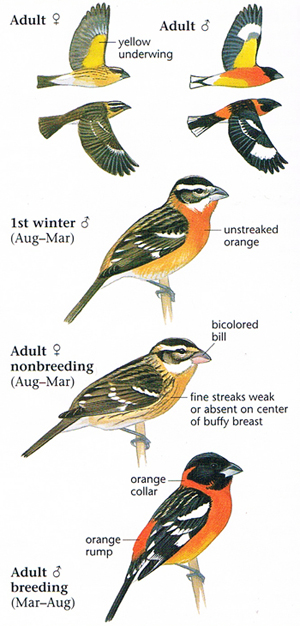
Photo taken from: The Sibley Field Guide by David Allen Sibley
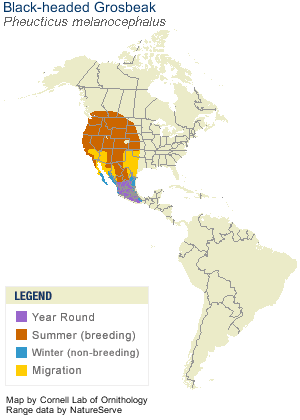
© 2003 Cornell Lab of Ornithology
|
Habitat |
|
Breeds in a variety of deciduous and mixed forest habitats. |
|
Behavior |
|
Gleans insects from foliage and branches. Will use bird feeders. |
|
Food |
|
Insects, seeds, and fruits. |
Taxonomy
| Kingdom: | Animalia |
| Phylum: | Chordata |
| Subphylum: | Vertebrata |
| Class: | Aves |
| Order: | Passeriformes |
| Family: | Cardinalidae |
| Genus: | Pheucticus |
| Species: | Pheucticus melanocephalus |
| Subspecies: | Pheucticus melanocephalus maculatus |
| Pheucticus melanocephalus melanocephalus |
Similar Species |
|
|
Bird Sound |
|
Song a series of rapidly ascending and descending notes separated by brief pauses. Call note a sharp "chink." |
|
Eggs look like this |
|
Photo taken from: ARCTOS Collaborative Collection Management Solution |
